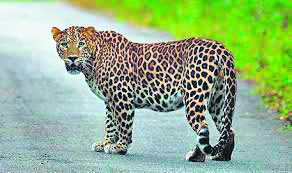


The Leopards of Haryana, the state’s largest predatory mammals, inhabit two distinct biospheres: the Shivalik hill range in the north, particularly around Kalesar National Park and the Morni Hills forest, and the forests of Northern Aravalli in South Haryana. However, recent incidents of leopards entering residential zones in both rural and urban areas across several districts in Haryana have raised concerns.
Reports of leopards invading residential areas in Hisar, Faridabad, Gurugram, Sonipat, and Nuh have surfaced in the last month, causing distress among residents. A particularly alarming incident occurred in Hisar, where a leopard entered a residential area, injuring two people before being captured after a multi-agency rescue effort.
The increased presence of leopards in residential areas poses threats to human lives and livestock. This surge in human-leopard conflicts raises questions about the factors leading these animals, especially leopards, to venture into residential areas.
The primary reason cited for this behavior is the escalating human interference in forests, driven by illegal activities such as mining and encroachment in the Aravalli hills. The shortage of food and water resources in their natural habitat further compels leopards to move closer to urban and rural populations, triggering a vicious cycle of conflicts.
The consequences are dire, as attempts to drive leopards out of residential areas often result in injuries or fatalities for the animals. Large parts of the Aravalli Hills lack legal protection, wildlife crossings, and conservation efforts, contributing to the untimely deaths of several leopards in recent years.
Notably, accidents, high-voltage electricity wires in forest areas, and hunting also contribute to the premature deaths of leopards. The Gurugram-Faridabad Road, NH-48 Delhi-Chennai Highway, and Kundli-Manesar-Palwal Expressway witness a significant number of leopard deaths due to human-animal conflicts. Efforts are needed to mitigate the root causes of human-leopard conflicts, focusing on habitat protection, wildlife conservation, and public awareness. As the state grapples with these challenges, finding a balanced approach to coexist with wildlife becomes imperative for the safety of both humans and animals.